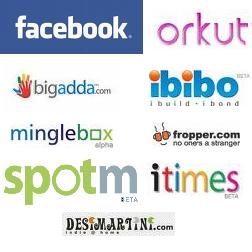|
|
|
|
|
|
|
|
|
|
 The film opens on a man walking on a lonely road. Seeing a five hundred rupee… The film opens on a man walking on a lonely road. Seeing a five hundred rupee…
|
|
 …note he stops in his tracks. Tempted to pick it up he ponders over something. …note he stops in his tracks. Tempted to pick it up he ponders over something.
|
|
|
|
|
|
|
|
|
|
|
|
|
|
|
|

After much deliberation he moves
on in disappointment without picking
up…
|
|

…the note. The ad ends with the
super and product shot: “Peeth
dard? Iodex.” |
|
|
|
Iodex is a trusted brand in India since 1919. It competes in the topical balm segment giving relief from back pains, waist pains, joint pains and sprains.
Agency: JW Thompson.
This is a problem and solution ad. It shows a man in the middle of a street and he is looking down at a Rs. 500 note. He is lucky that he has spotted it. He looks at it, tries to make up his mind to bend down take it but after a while with a sad dejected helpless look on his face walks away. Before you begin to think why he moved away Iodex comes on screen. Backache is quite common these days and one really has to convince oneself hard to do certain things when one are suffering from it. This ad shows one of those things very candidly.
The ad has definitely been effective in creating the desired impact on the mind of consumers. The ad is catchy as it has a creative idea to it. It has a surprise element which is why it is so popular amongst viewers of all ages. People cannot guess what the product is until and unless they see the pack shot of the ad. This makes the ad effective as well as entertaining. It creates the “ohhh!!” experience towards the end. This helps the product to get registered in the minds of consumers. It surely helps in brand aid and recall. The presentation of the ad was quite one sided. It only makes you aware of the reasons you should purchase the product for.
The film reminds most creative ad film makers that a simple idea is much more precious and successful than ads with so much of frills. The utility of the product is best explained in the ad and that’s what has made it consumer’s recent favorite.
The ad is in complete harmony and the transition from one scene to another has been done smoothly. The scenery or the backdrop in the film complements the pack shot of the product. The green trees shown in the background harmonize with the color of the pack of Iodex. The ad surely follows the age old adage that actions speak louder than words. The ad film does not involve any kind of dialogues or oral communication and yet it has been so effective in conveying its message to the target audience. The ad is generic and has a universal appeal in terms that consumers across all ages love the communication.
To know about the effectiveness of the ad in detail, I carried out a small one to one interview based research amongst people of all age groups. I asked questions to know details like brand recall, ad recall, product purchasing effect in the ad, content recall etc. The observation of the research is as follows: Almost 90% of the people recalled the ad and narrated the underlined story. This means that they not just recalled the ad but understood the product message as well. People across all ages loved the ad and its simplicity of communication. However, once that they had seen the ad, they were not very interested in seeing it again as the message was already clear at the very beginning. In brief, the ad was effective but not very appealing that people would love to see it time and again.
The ad does not persuade the consumers the buy the product. However, it just makes a subtle reminder. The ad silently knocks the consumer’s mind to recall Iodex whenever they think of back pain. The ad only describes of a simple scene and the product is tactfully represented.
Most people identified with the character shown in the ad. The character is very much like a middle class Indian man struggling and working hard to support his family. The character represents the potential customers for Iodex.
The commendable part of the ad was with a minimal budget, the product’s message reached the consumer. This straightforward ad conveyed the maximum with its minimal resources. Hence the ad truly achieved success in terms of the cost to effectiveness ratio.
However one of the limitations in the ad is that it only shows the problem of backache and the solution to it. The product however is also used for other problems such as joint pains and sprains. It demonstrates only one aspect of the product’s utility.
In conclusion, I would like to say that the ad has indeed proved that ‘simplicity is the glory of expression’. This short ad film with a crisp idea has indeed been effective amongst the consumers in achieving the desired results.
 We are hearing all the time that the traditional media is soon going to disappear and that brands that do not adhere to new innovative ways of marketing and advertising will be forgotten in the consumer’s mind. Innovative usage of media is the need of the hour and clients should stop spending their money on traditional advertising mediums like print and TV. However, when a marketer is churning out a 360 degree campaign, should he spend on these traditional mediums or should he only use the new innovative mediums of advertising that are available to us today? This seems to be a million dollar question!
We are hearing all the time that the traditional media is soon going to disappear and that brands that do not adhere to new innovative ways of marketing and advertising will be forgotten in the consumer’s mind. Innovative usage of media is the need of the hour and clients should stop spending their money on traditional advertising mediums like print and TV. However, when a marketer is churning out a 360 degree campaign, should he spend on these traditional mediums or should he only use the new innovative mediums of advertising that are available to us today? This seems to be a million dollar question!

 The film opens on a man walking on a lonely road. Seeing a five hundred rupee…
The film opens on a man walking on a lonely road. Seeing a five hundred rupee… …note he stops in his tracks. Tempted to pick it up he ponders over something.
…note he stops in his tracks. Tempted to pick it up he ponders over something.

 Traditionally, an advertising agency would typically have various set departments under which people are suppose to operate.
Traditionally, an advertising agency would typically have various set departments under which people are suppose to operate. Globally, the online game market is expected to reach $4.4 billion by 2010. Gaming especially mobile gaming is becoming an important industry in India. This is primarily fueled by the increasing use of mobile phones in the country. Even online gaming is a huge potential segment for advertising as a result of the increasing usage of PC and internet connections in India. India offers tremendous scope for game developers.
Globally, the online game market is expected to reach $4.4 billion by 2010. Gaming especially mobile gaming is becoming an important industry in India. This is primarily fueled by the increasing use of mobile phones in the country. Even online gaming is a huge potential segment for advertising as a result of the increasing usage of PC and internet connections in India. India offers tremendous scope for game developers. A new form of internet advertising that is growing rapidly is social network advertising. It is online advertising with a focus on social networking sites. This is a relatively immature market, but it has shown a lot of promises as advertisers are able to take advantage of the demographic information the user has provided to the social networking site.
A new form of internet advertising that is growing rapidly is social network advertising. It is online advertising with a focus on social networking sites. This is a relatively immature market, but it has shown a lot of promises as advertisers are able to take advantage of the demographic information the user has provided to the social networking site.